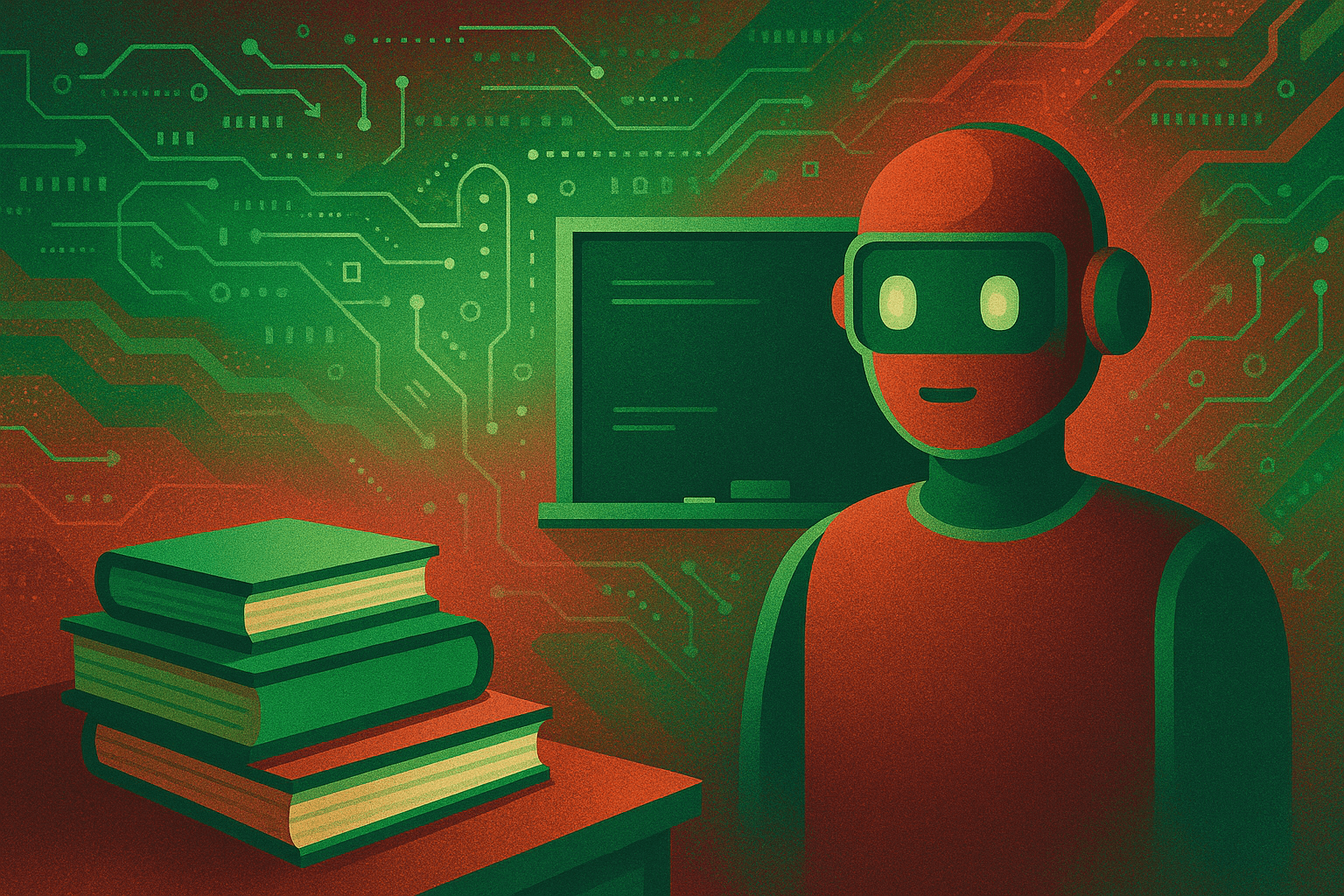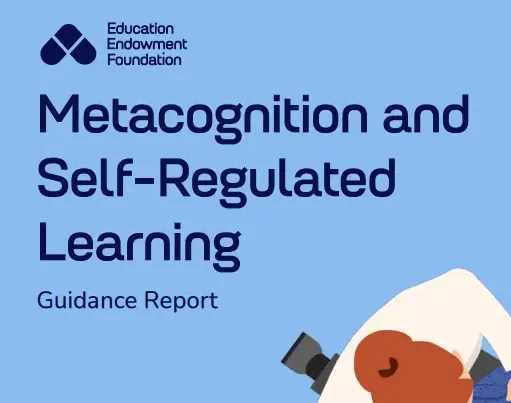How to Use AI in Your Teaching – Friend or Foe?
Do you remember when calculators were first allowed in classrooms? Some feared that students would “forget how to do maths.” Do you remember when projectors, interactive whiteboards, or even the internet arrived? Each time, teachers worried that new technology would take away their role. But what happened? None of those tools replaced teachers. Instead, they reshaped how we teach – making lessons more engaging, more efficient, and more effective.
Now it’s the turn of Artificial Intelligence (AI). Perhaps you’ve heard colleagues whisper: “Will students just use AI to write all their essays?” or “If AI can plan lessons, what’s left for teachers to do?” These are real worries – especially for teachers in Bangladesh who already face heavy workloads, large classes, and increasing expectations.
So, let’s ask the hard question: is AI just another educational fad, or is this something truly different?
Why AI Is Different: The Evidence
This isn’t just another shiny gadget or app that will be forgotten in two years. Global research – from the UK’s Education Endowment Foundation (EEF), UNESCO, and leading education thinkers – shows that AI has the potential to transform not what we teach, but how we manage teaching and learning.
For example:
-
Reducing workload: Studies from RAND and McKinsey suggest teachers spend up to 40% of their time on non-teaching tasks (marking, administration, planning). AI can significantly reduce this burden, giving teachers back precious hours each week.
-
Personalised learning: Research into adaptive technology shows that AI can generate questions, explanations, or practice tasks matched to a student’s ability – something impossible to do at scale in a class of 50 students without technology.
-
Feedback at scale: Evidence from the EEF demonstrates that timely feedback is one of the most effective strategies for raising achievement. AI tools can draft instant feedback, which teachers then refine, so every student receives guidance quickly.
In short, AI is not a gimmick. It represents a step-change in how teachers can use their time and expertise. Think of it this way: AI won’t replace teachers. But teachers who learn to use AI effectively may well replace those who don’t.
The Teacher’s Role Remains Central
So, let’s address the elephant in the room: control. Many teachers worry that embracing AI means handing over authority to machines. But ask yourself: did using calculators mean maths teachers lost control? Did PowerPoint slides mean lecturers lost their voice? Of course not.
AI is a tool – powerful, yes, but still a tool. You are the one who decides how to use it. You set the learning goals, you interpret the data, you build relationships with your students, and you make the professional judgements that no machine can replicate.
As John Hattie (author of Visible Learning) reminds us, the single biggest factor in student achievement is the teacher. Not technology. Not policy. Not exams. The teacher. AI can amplify your expertise, but it cannot replace it.
So rather than thinking “Will AI take over my classroom?”, try asking: “How can AI give me more time to teach, more energy to support students, and more tools to inspire learning?”
Practical Applications: 5 Ways to Try AI in Your Classroom
Still unsure? The best way to understand AI’s potential is to try it. Here are five practical, research-backed ways to explore AI in your classroom – without losing control.
1. Smarter Lesson Planning
Teachers often spend hours creating resources. AI can draft lesson outlines, suggest examples, or generate practice questions. You don’t need to accept everything it gives you – you remain the editor – but you save time. Research shows that well-sequenced lessons are key to memory and understanding. AI can help you brainstorm those sequences, while you decide what works for your class.
Try this: Ask an AI tool to suggest three activities for teaching fractions to 10-year-olds. Compare them with your own ideas. Could one of them save you planning time?
2. Differentiation Without the Stress
How often do you think: “This student needs more practice, but that one is already bored”? In Bangladesh, where class sizes are large, this is a daily challenge. AI can generate multiple versions of the same task at different levels. Evidence shows that adaptive learning leads to greater progress, particularly for struggling students.
Try this: Use AI to create three levels of reading comprehension questions on the same text – simple, medium, challenging. Hand them out to different groups in your class. Notice how much more tailored the learning feels.
3. Feedback at Speed
We know from EEF studies that feedback is most effective when it is timely and specific. But marking 200 scripts takes time. AI can draft comments (“Your argument is clear, but you need more evidence to support your conclusion”) which you can then personalise. Instead of writing 200 near-identical sentences, you adjust and focus on the details that matter.
Try this: Copy one student paragraph into an AI tool and ask for draft feedback. Then refine it in your own voice. Imagine doing that across a whole class.
4. Creative Spark in the Classroom
Teaching isn’t just about exams – it’s about sparking curiosity. AI can suggest debate topics, role-play scenarios, or unusual writing prompts. It’s like having an always-ready brainstorming partner.
Try this: Ask AI for five “What if…” questions to kick off a science lesson. Example: “What if humans could breathe underwater?” Suddenly, your class is buzzing with imagination.
5. Freeing Your Time, Freeing Your Mind
Perhaps the biggest impact of AI is on teacher workload. Research consistently shows that overworked teachers struggle to stay motivated, and students notice. By letting AI handle repetitive tasks, you can spend your energy where it really counts – explaining concepts, encouraging students, mentoring individuals.
Try this: Identify one routine task you dislike – writing model answers, drafting cover work, or formatting worksheets. Let AI do the first draft. See how much lighter your week feels.
Reassurance for Teachers in Bangladesh
Let’s pause here. This isn’t about making you work harder. It isn’t about replacing the “human” with the “machine.” It’s about using evidence-based strategies to make teaching more effective and sustainable.
Bangladesh faces unique challenges: large classes, limited resources, and heavy workloads. That’s why AI could be more transformative here than in many other countries. By adopting these tools, teachers can reduce stress, improve outcomes, and raise the status of teaching as a modern, forward-looking profession.
And remember: students still need you. They need your judgement, your encouragement, your humour, your care. No machine can replace that.
Ready to Take the Next Step?
So, is AI a fad? The evidence says no. Is AI going to replace teachers? Absolutely not. But is AI going to reshape education in Bangladesh and worldwide? Yes – and the sooner teachers begin to explore it, the more control they will have over how it’s used.
At Evidence Based Teacher Development Bangladesh (EBTD), we’ve designed a new training course: “How to Use AI in Your Teaching.” It’s built on international research, tailored for the realities of Bangladeshi classrooms, and packed with hands-on activities. We don’t just talk about AI – we show you exactly how to use it, step by step, in ways that save time and improve learning.
Why not take the first step today? Equip yourself with the knowledge, skills, and confidence to make AI your teaching ally. Because the future of education isn’t about replacing teachers – it’s about empowering them.
👉 Coming soon to Bangladesh – join us and discover how AI can support your classroom.





